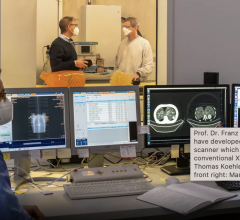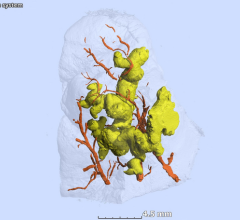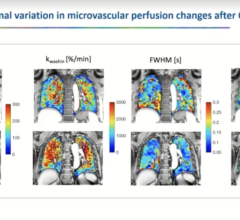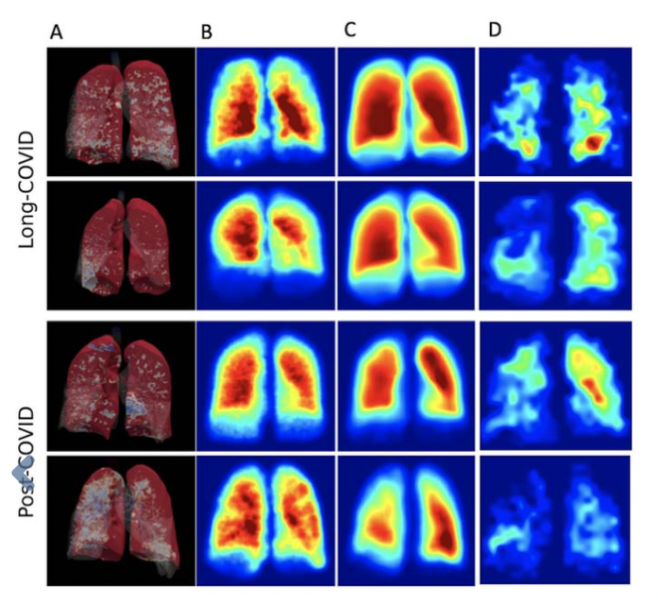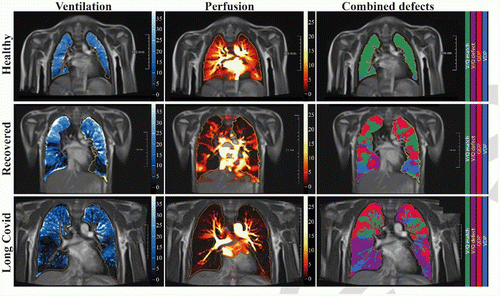As 2022 comes to a close, the Imaging Technology News team takes a look at the year's most viewed content. Here is a ...
Coronavirus (COVID-19)
This page contains medical information for clinicians on the 2019 Novel Coronavirus (COVID-19, also called 2019-nCoV and now clinically SARS‐CoV‐2). This section includes articles on medical imaging of the virus for radiologists, new technologies being deployed to fight the virus and clinical information from various sources. Here are direct links for medical professionals to COVID-19 resources from the U.S. Food and Drug Administration (FDA), Centers for Disease Control (CDC) and the World Health Organization (WHO). Daily world-wide statistics on the coronavirus outbreak are available from the WHO Situations Reports. Centers for Medicare and Medicaid Services (CMS) frequently asked questions and answers (FAQs) for healthcare providers regarding Medicare payment for laboratory tests and other services related to the COVID-19
December 23, 2022 — In just two years, the Medical Imaging and Data Research Center (MIDRC) has released over 100,000 ...
December 7, 2022 — A research team at the Technical University of Munich (TUM) has, for the first time, produced dark ...
December 7, 2022 — Gross anatomy reveals three-dimensional shapes of pathology at a large scale. Histology, in contrast ...
Here is a recap of what ITN viewers found most interesting during the month of November: 1. Top 10 Predictions for ...
December 2, 2022 — New CT technology outperforms conventional CT in detecting subtle damage in the lungs of patients ...
December 1, 2022 — COVID-19 infection is associated with increased liver stiffness, a sign of possible long-term liver ...
November 30, 2022 — Findings from four separate studies on long-term impacts of COVID-19 were presented during a ...
November 21, 2022 — Using a special type of MRI, researchers have uncovered brain changes in patients up to six months ...
Here is a rundown of what you and your colleagues found to be most interesting in the field of medical imaging during ...
According to the American Academy of Pediatrics, as of October 6th, over 14.8 million children are reported to have ...
This photo gallery shows the variety of radiological presentations of COVID-19 (SARS-CoV-2) in medical imaging ...
October 20, 2022 — A large study on the impact of long COVID found increased rates of health system use 2 months after ...
Here is a recap of what ITN viewers found most interesting during the month of September: 1. Lasting Lung Damage Seen in ...
September 27, 2022 — UK Biobank, the large-scale biomedical database and research resource, together with the Medical ...
September 20, 2022 — Children and adolescents who have either recovered from COVID-19 or have long COVID show persistent ...
Anthony S. Fauci, MD, who was instrumental in leading the country through the COVID-19 pandemic, announced today through ...
August 17, 2022 — In a study published today in the Journal of General Internal Medicine, researchers at the Icahn ...
Here is what you and your colleagues found to be most interesting in the field of medical imaging during the month of ...
The Association for Medical Imaging Management (AHRA) celebrated its 50th anniversary July 10-13, 2022, in Phoenix. To ...


 January 02, 2023
January 02, 2023 

